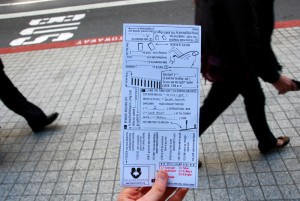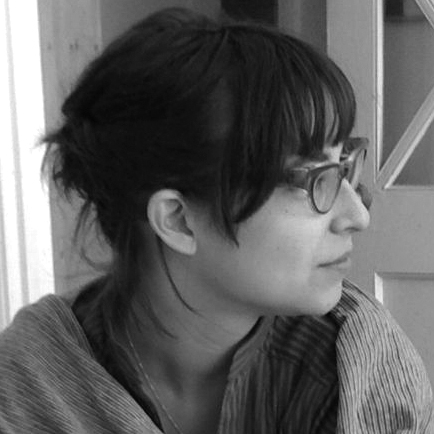The Jejune Institute was the first segment of a four-part, interactive narrative created by Nonchalance. It was woven into the fabric of San Francisco, providing residents and tourists a way to interact with the city that offers surprise and adventure. For two and a half years it offered an experience that was re-playable and open to many levels of interaction, rewarding depth of participation while also offering something for the more casual participant.
Games of Nonchalance trailer (by Spencer McCall)
The Methodology
We approached the project on two fronts. The first was an exercise in cultural curation. We took on an in-depth research project into the Bay area’s history and recent past with special focus on the self-help movements and psuedo-sciences popular in the 1970’s and the punk and hip-hop youth cultures of the 1980’s. Incorporating select imagery, icons and little-known oddities from this research, we crafted a narrative with strong leading characters and a rich backstory that wove itself into the fabric of the city.
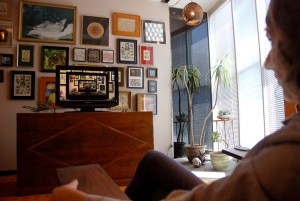
Participants began by being "inducted" into the Jejune Institute, pictured above. Their presence in the room triggered a series of audio and video elements that introduce them to the Institute's founder, Octavio Coleman Esq.
As this research took shape, we worked on the second front: incorporating our developing narrative into the streets, parks, and under-explored public and private spaces of the city. For each of the four episodes that made up the core of the interactive adventure, we identified a different neighborhood based on its individual character and potential as a setting in which our narrative could unfold. These urban spaces in turn inspired our creation and implementation of a variety of narrative devices based on the opportunities we discovered in the physical terrain, the existing businesses, and the nooks and crannies of the street scape.
We carefully designed the structure of each episode to be slightly different from the others. The way in which participants navigate from one place to another and from one branch of the narrative to another varies as they complete the activities in each neighborhood. These build one each other, each episode teaching the participants how to play. The first episode has only one linear path available, the second allows players to travel a more lateral route, making choices and gathering information from multiple sources as they find their way. Each interaction was carefully designed and play tested to insure that participants would find themselves challenged and ultimately rewarded. Because the goal was a re-playable experience that would be accessible on an individual and small group level, it was necessary to design each interaction to appeal to multiple senses and ways of learning.
The Experience
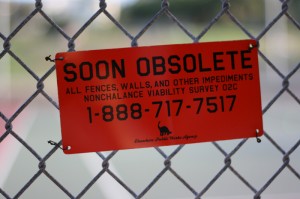
The project was promoted through materials that stayed within the narrative, such as this sign on public fence stating that all impediments will soon become obsolete. These fence signs, often put up by participants themselves, dot various locations in the city and contain working phone numbers that lead newcomers down the narrative rabbit hole.
The audience grew through a stealth campaign that included fliers with tear-off phone numbers advertising strange products such as a Human Forcefield and metal fence signs promising that all impediments would soon be obsolete. Through a series voicemail messages and websites, the early adopters eventually found themselves at the doors of the Jejune Institute on the sixteenth floor of a San Francisco Financial district high-rise. At the reception desk, they were handed a key that opened a door to one of the offices on the floor. As they entered a room that owed its original interior decor to someone in 1970s with an interest in earth sciences, metaphysics, and self-help, an automated voice requests that they take a seat. When the participant is seated, they are treated to a video that introduces Octavio Coleman, the leader of the Jejune Institute, and details the Institute’s fictional history. From this room players set out into the streets of Chinatown, searching for clues that will help them find their way towards unravelling the threads of the narrative.
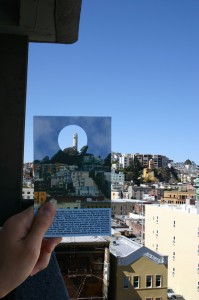
Players purchased this postcard at a nearby shop in Chinatown. When held up in a certain location farther down the path, the postcard reveals hidden elements of the public streetscape.
As they progress through the adventure, participants encounter artifacts for sale in local businesses, that when brought to a specific site, reveal more of the story and encourage a fresh look at details of the urban landscape that may have previously gone unnoticed. Through phone calls with characters and instructions received via a a ‘pirate’ radio station only available in one park, they locate hidden mosaics, travel secret stairwells, and discover miniature installations inside rock walls. Online content in a variety of forms including a custom flash-based interactive visualization of the interconnected web of the narrative supports this very tangible adventure. For those with smart phones or other similar mobile devices, there are additional opportunities to experience augmented reality content that enhances some of the physical installations.
At a Glance
- Received press coverage from The New York Times, Wall Street Journal, San Francisco Chronicle, Bomb Magazine, Aesthetica Magazine, Wired, The Bold Italic and many others.
- Winner of the 2010 Indiecade award for ‘Best Storyworld’ and a San Francisco Bay Guardian ‘Best of the Bay’ award
Role: Lead Producer and Experience Designer
I served as lead producer for all elements of the Games of Nonchalance including: video, printed ephemera, physical installations, websites and other digital content. In this role, I worked with a talented group of artists and designers to ensure that each medium fit together to tell a visually cohesive story. I worked directly on the timeline, budget, and execution of each element in order to carry the creative vision for the project through to each detail.
I also worked on the core of the experience design. I saw to it that the variety of media and platforms delivered an experience that captivated and invited a variety of levels of participation. I oversaw play testing of each element to make certain that players could navigate the experience successfully.
